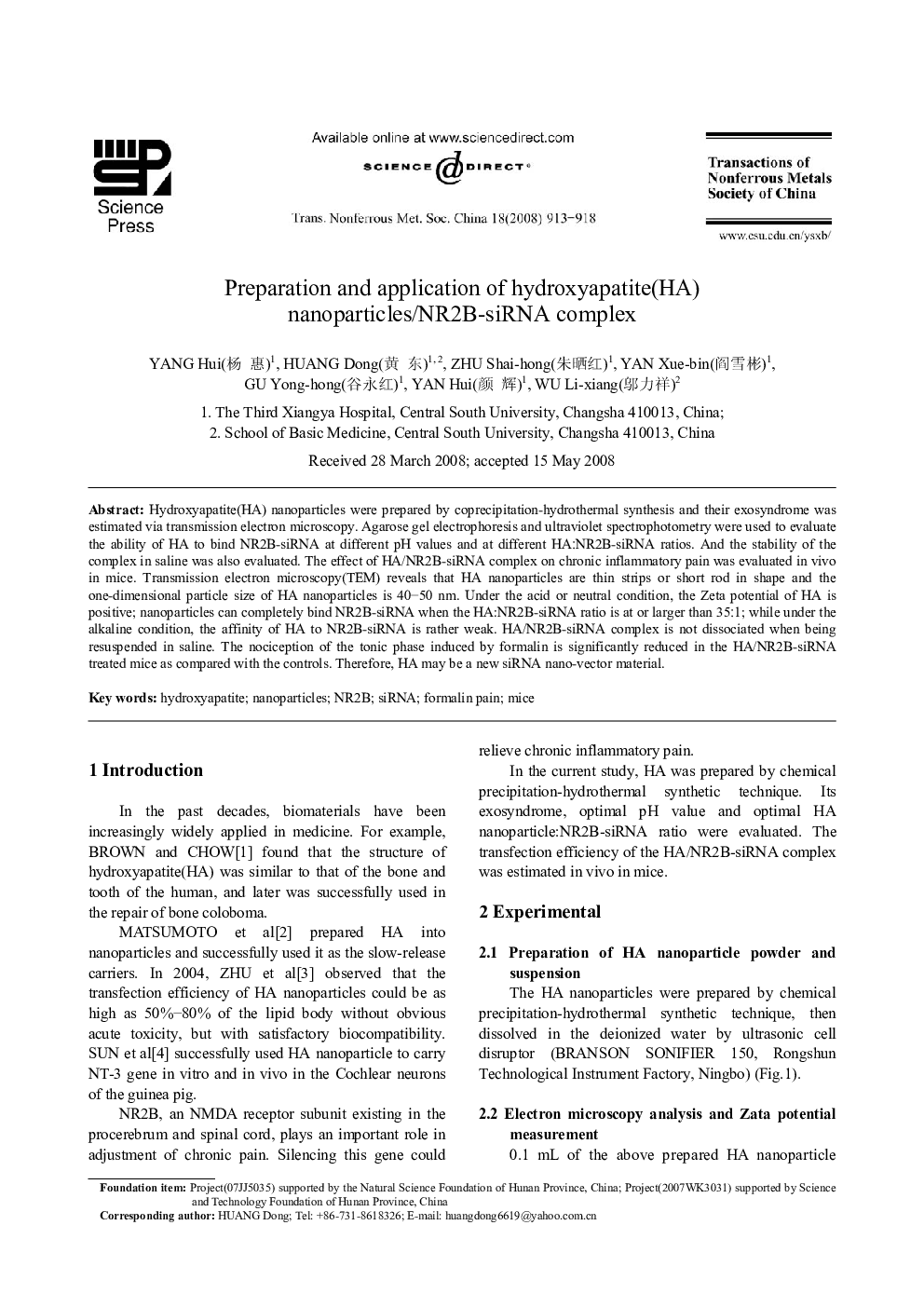| کد مقاله | کد نشریه | سال انتشار | مقاله انگلیسی | نسخه تمام متن |
|---|---|---|---|---|
| 1639608 | 1517043 | 2008 | 6 صفحه PDF | دانلود رایگان |

Hydroxyapatite(HA) nanoparticles were prepared by coprecipitation-hydrothermal synthesis and their exosyndrome was estimated via transmission electron microscopy. Agarose gel electrophoresis and ultraviolet spectrophotometry were used to evaluate the ability of HA to bind NR2B-siRNA at different pH values and at different HA:NR2B-siRNA ratios. And the stability of the complex in saline was also evaluated. The effect of HA/NR2B-siRNA complex on chronic inflammatory pain was evaluated in vivo in mice. Transmission electron microscopy(TEM) reveals that HA nanoparticles are thin strips or short rod in shape and the one-dimensional particle size of HA nanoparticles is 40–50 nm. Under the acid or neutral condition, the Zeta potential of HA is positive; nanoparticles can completely bind NR2B-siRNA when the HA:NR2B-siRNA ratio is at or larger than 35:1; while under the alkaline condition, the affinity of HA to NR2B-siRNA is rather weak. HA/NR2B-siRNA complex is not dissociated when being resuspended in saline. The nociception of the tonic phase induced by formalin is significantly reduced in the HA/NR2B-siRNA treated mice as compared with the controls. Therefore, HA may be a new siRNA nano-vector material.
Journal: Transactions of Nonferrous Metals Society of China - Volume 18, Issue 4, August 2008, Pages 913-918